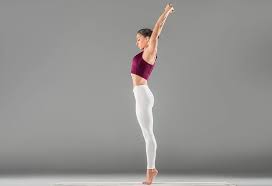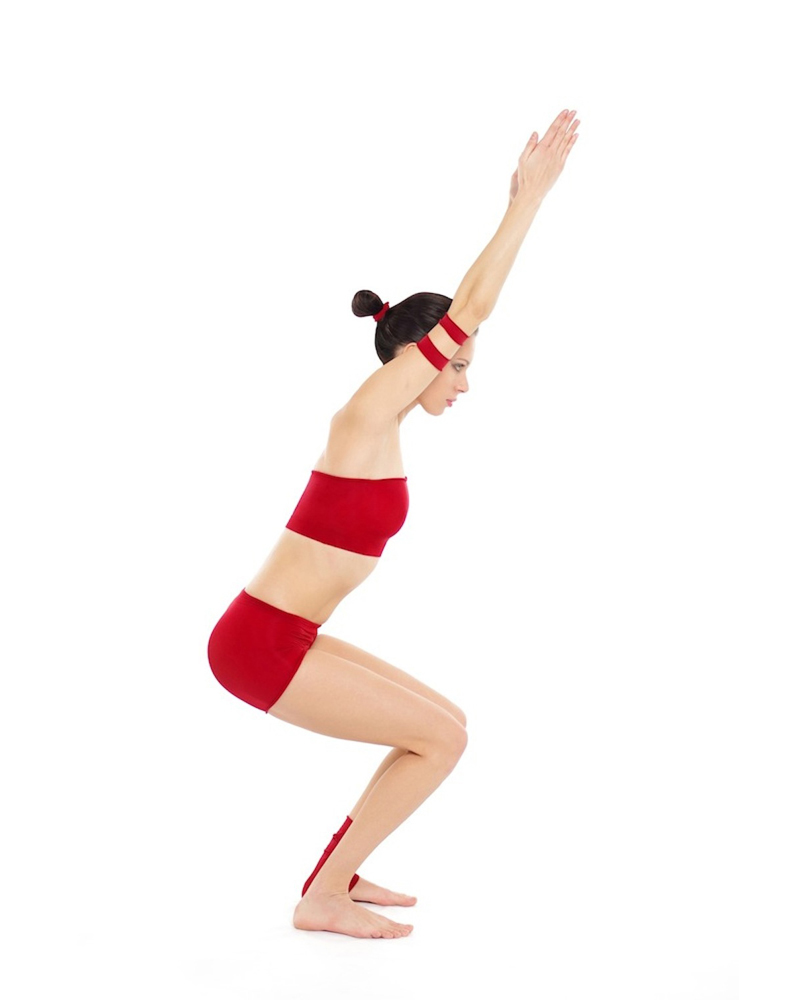Tadasana (Samasthiti) – Tadasana is also known as Samasthiti. TADA is a Sanskrit word and means Mountain Asana means posture. Another word is Samasthiti. SAMA means equal, STHITI means Standing.
This Asana is a balancing pose. All the standing poses start from the Mountain pose and end in the Mountain Pose. So, it is a basic pose for all the standing poses. After doing many standing poses, you can rest in this position to normalize the breathing. This is the very active position. As soon someone stand in this correct position it activates the Sattvic Energy, means provide lightness, stability, grounded in the position before move. This asana is included in the 200 hour yoga teacher training course.
BKS Iyengar stated – “Once we can master the Tadasana, then all the other poses come naturally”.
How To Do –
⦁ Place your feet together or with apart with your hip joints.
⦁ Make sure that your knees are lifted up and legs are active.
⦁ Take your tailbone in.
⦁ Spine erect from tailbone to skull.
⦁ Roll your shoulders towards the back and drop them, and align them to your collarbone.
⦁ Arms are gentle active along of your body and fingers are active.
⦁ Take your chin in and look front.
⦁ Focus your mind on your breathing and observe your breaths.
⦁ Enjoy the stability with free-flowing breaths.
Contraindications
⦁ People having headache, or migraine should not practice mountain pose.
⦁ For people with low blood pressure, holding this posture for quite long time may cause dizziness. Because there will be more blood flow in the lower part of the body.
⦁ For expecting women, they have to keep the legs wide apart instead of together.
Benefits
⦁ Tadasana is a best centering pose and feels grounded, provides stability before move towards any other poses.
⦁ It is very good pose for mental and emotional balances.
⦁ It helps in the proper alignment of the body which strengthens and tones the core muscles.
Triyak Tad Asana (Bending Tree Pose)
Tiryaka Tadasana is a basic standing posture which is a variation of Tadasana with a side stretch. The name traces its roots to the Sanskrit ‘Tiryaka’, which means ‘oblique’ or ‘swaying’; ‘Tada’, means ‘mountain’; and ‘asana, which means ‘posture’ or ‘pose’.
How To Do It-
Stand with your hands at your sides in Samsthiti. The legs can be kept apart or together by roughly a foot and a half.
The two palms can be joined or crossed, or, kept apart with the palms down.
Slowly inhale and lift your hands above your head. The palms are now facing one another.
Slowly exhale, and then move to the left side with your arms straight up so that your biceps touch the ears. Continue bending as much as you can without straining. Keep your upper arms close to your ears as you go through this process.
As long as you are comfortable, you can stay in this position. Feel the stretch around the waist and on the right side of the ribs. After taking a breath, straighten your body again. This is a part of yoga teacher training courses.
Contraindications
⦁ If you have any sort of surgery or injury in the arms, legs or the shoulders, you should give this asana a miss.
⦁ All those students who have dizziness, or other issues with balance can avoid the standing version and do the seated one.
Benefits
⦁ The pose helps in stretching the body, strengthens it, and also elongates the spine.
⦁ It also increases the flexibility and range of movement.
⦁ It is a very energizing and de-stressing asana.
⦁ You will also develop a lot of focus and awareness, by doing the asana.
⦁ Your intercostal muscles will get a good stretch, so that your strength and flexibility increases.
⦁ When you stretch the body on one side, you experience compression on the other side. Thus, regulating the proper secretion of hormones.
⦁ It also makes the spine supine.
Join our yoga courses : –
200 hour yoga teacher training in rishikesh 300 hour yoga teacher training in rishikesh
our suggestion :- wikipedia





